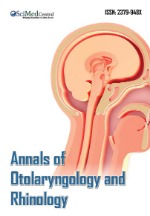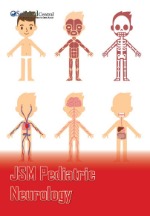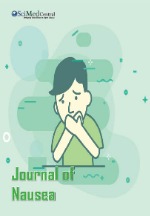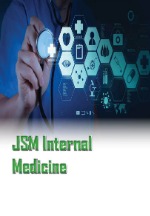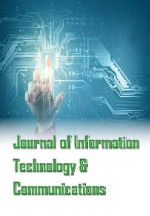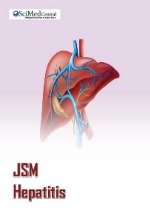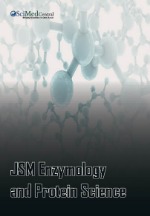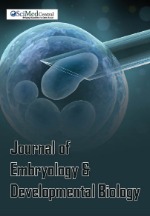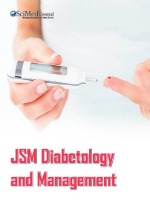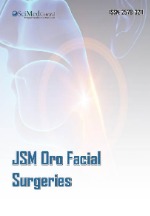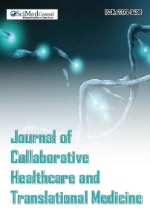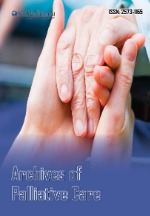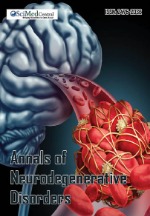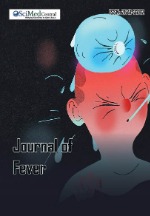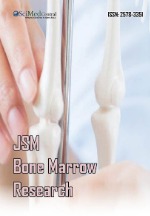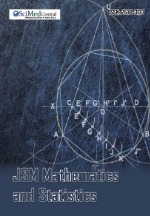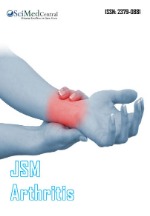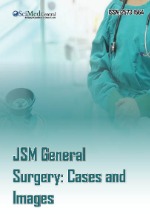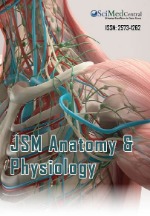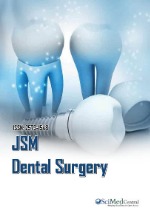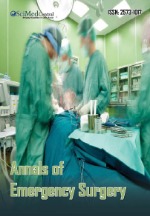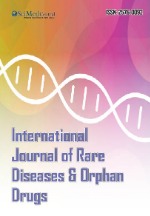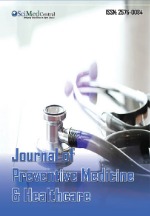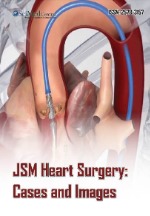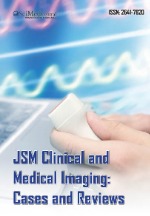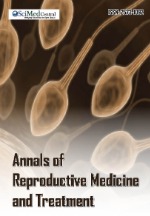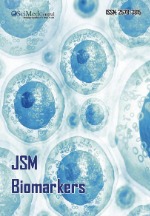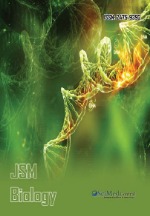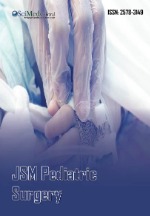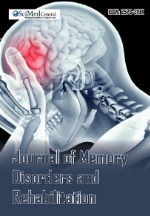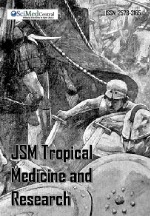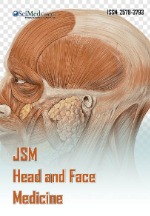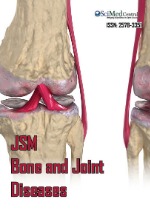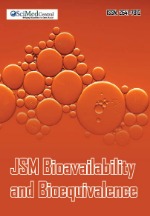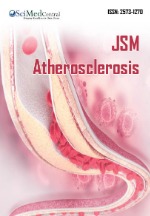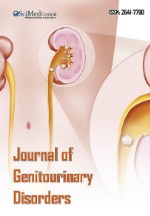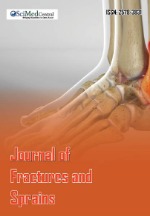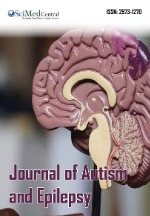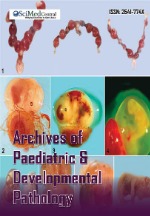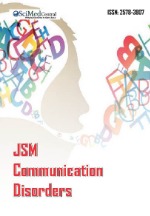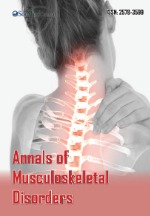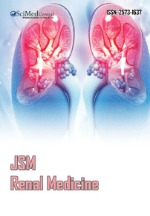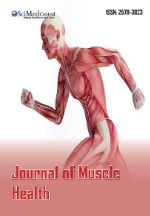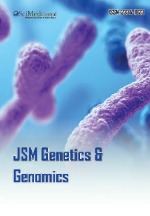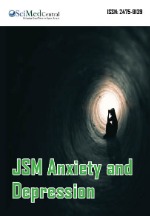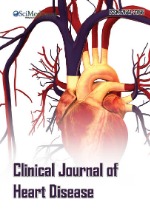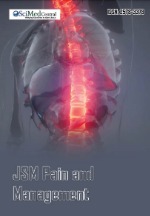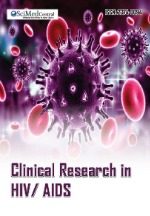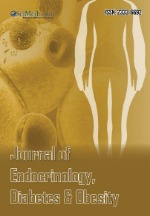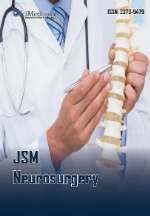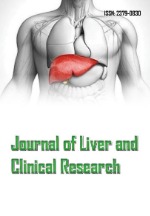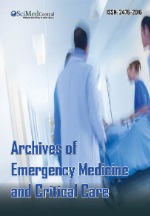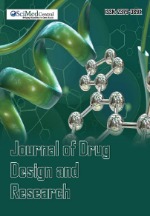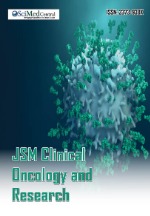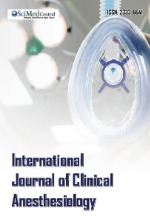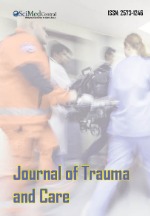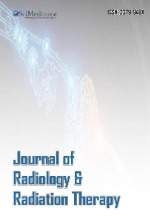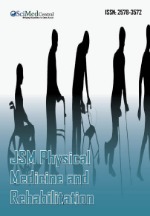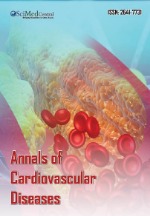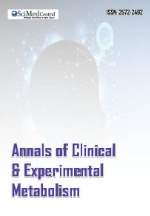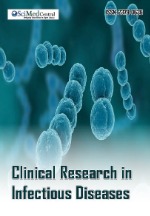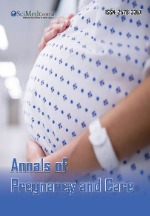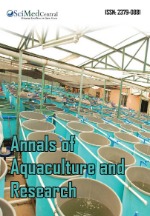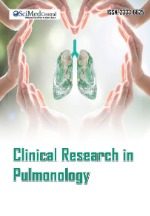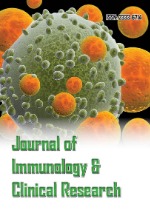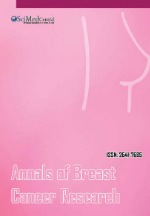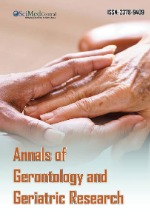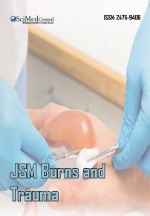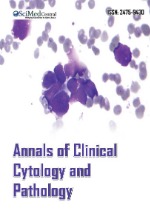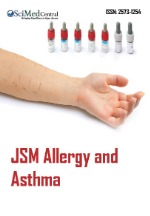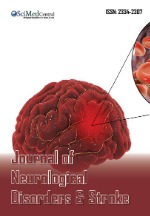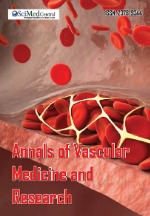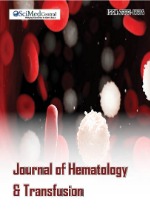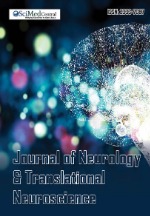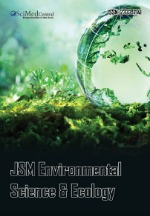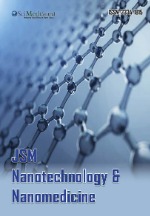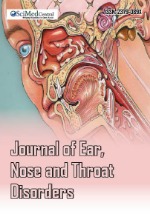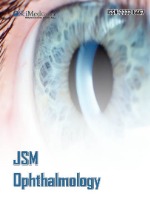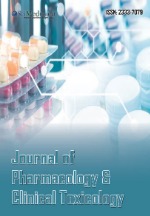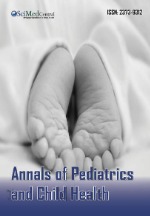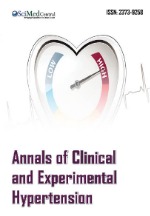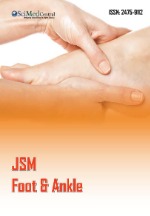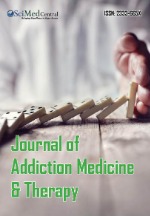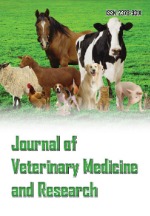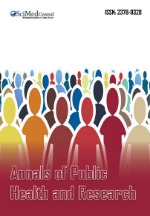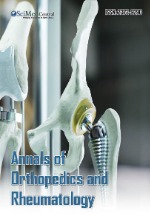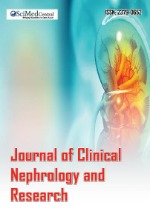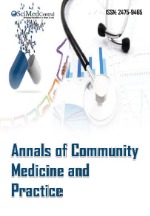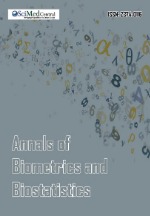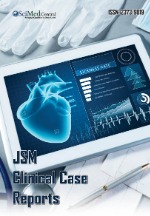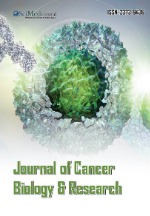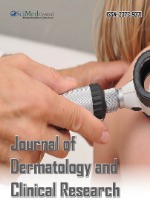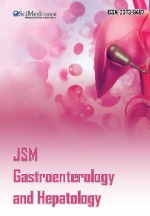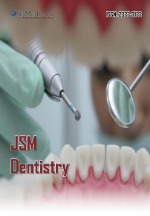Perioperative Risk Factors Associated With Urosepsis Complicated by Urolithiasis: A Systematic Review and Meta-Analysi
- 1. School of Nursing, Guizhou Medical University, China
- 2. Department of Urology, Jinyang Hospital Affiliated to Guizhou Medical University (The Second People’s Hospital of Guiyang), China.
- 3. School of Nursing, Guizhou University of Traditional Chinese Medicine, China.
- 4. Affiliated Hospital of Guizhou Medical University, China.
- #. Equal contribution
Abstract
Objective: To derive the risk factors affecting the perioperative period of urologic stones complicating urogenital sepsis through systematic evaluation.
Methods: A computerized search of the literature on perioperative risk factors associated with urologic stones complicating urosepsis was performed in PubMed, Embase, Web of Science, The Cochrane Library, CNKI, Wanfang, and other databases. The search timeframe was from database construction to June 2024. Meta-analysis was performed using RevMan 5.4 and Stata 15 software.
Results: A total of 42 papers were included, in which age ≥60 years [OR = 1.95, 95% CI (1.55, 2.50)], Female [OR = 1.28, 95% CI (1.17, 1.40)], Positive urine culture [OR = 1.77, 95% CI (1.38, 2.28), Intraoperative irrigation volume >20 L [OR = 4.89, 95% CI (3.69, 6.49)], Stone diameter >20 mm [OR = 1.59, 95% CI (1.35, 1.88)], Positive procalcitonin (PCT) [OR = 1.76, 95% CI (1.29, 2.41)], Urinary tract infection [OR = 4.02, 95% CI (1.92, 8.41)], Diabetes mellitus [OR = 1.82, 95% CI (1.53, 2.17)], Percutaneous nephrostomy tract size >20F [OR = 6.18, 95% CI (33.26, 9.63)], Urinary nitrite positivity [OR = 2.20, 95% CI (1.04, 4.67)], Operative time ≥90 minutes [OR = 1.13, 95% CI (1.03, 1.23)], Multiple stones [OR = 6.89, 95% CI (3.24, 14.64)], Preoperative antibiotic non-use [OR = 2.97, 95% CI (1.41, 6.26)], Fever [OR = 3.62, 95% CI (2.11, 6.21)], Obesity [OR = 2.44, 95% CI (1.36, 4.38)], were the risk factors for urologic stones complicating urogenital sepsis. toxemia perioperative related risk factors.
Conclusions: Age ≥ 60 years, female, obesity, diabetes mellitus, fever, urinary tract infection, positive urine culture, urinary nitrate, calcitoninogen, no preoperative antibiotics, intraoperative irrigation fluid usage >20 L, percutaneous renal access >20 F, surgery time ≥90 minutes, stone diameter ≥ 20 mm, and multiple stones significantly increased the risk of urinary stones complicating urogenic septicemia, providing healthcare professionals with the opportunity to evidence-based basis for subsequent development of individualized measures for patients with urogenital sepsis.
KEYWORDS
- Urolithiasis
- Urosepsis
- Risk Factors
- Rerioperative Period
- Meta-Analysis
CITATION
Zhou W, Zeng S, Cai M, Wang J, Sun X, et al. (2025) Perioperative Risk Factors Associated With Urosepsis Complicated by Urolithiasis: A Systematic Review and Meta-Analysis. J Urol Res 12(1): 1160.
INTRODUCTION
Urosepsis is a dysfunction of host immune response caused by urinary tract infection, which is a systemic inflammatory reaction leading to organ dysfunction of the organism [1], and its main symptoms include fever, tachycardia, tachypnea, decreased blood pressure, and may even lead to death, which poses a serious threat to the patient’s physiology and psychology. In recent years, the studies on the risk factors of urosepsis have gradually increased at home and abroad. Studies have shown that factors such as female, advanced age, and longer duration of surgery are closely associated with the occurrence of urogenital sepsis [2,3], increasing risk of perioperative urosepsis in patients. However, some studies have reached opposite conclusions when analyzing the same metrics, and the results have not been agreed upon across studies [4]. Therefore, the risk factors of urologic stones complicating urogenital sepsis still need to be explored comprehensively and thoroughly. The aim of this study was to identify the perioperative risk factors for urologic stones complicating urogenital sepsis by using meta-analysis, and to provide an evidence-based basis for the subsequent development of individualized measures for patients with urogenital sepsis.
INFORMATION AND METHODS
Literature Search Strategy
A computerized search of PubMed, Embase, Web of Science, Cochrane Library, CNKI, SinoMed, Wanfang and other databases was conducted to retrieve the research literature on the risk factors associated with urologic complications of perioperative urogenital sepsis, with a time frame of June 2024 for the construction of the database. The search was constructed using a combination of Mesh subject terms and free words, with “urolithiasis, urosepsis, factors, perioperative” as the main Chinese search terms. The main English search terms were “urolithiasis, urosepsis, factors, perioperative care”. (PROSPERO registration number: CRD42023485267).
Literature Inclusion and Exclusion Criteria
Inclusion Criteria: (1) the study subjects were patients with urinary stones complicated by urogenital sepsis; (2) there were clear diagnostic criteria for urogenital sepsis; (3) the type of study was an observational study such as a cohort study, case-control study, etc.; (4) the definitions of study indexes and quantification of the risk factor design in the literature were generally consistent; (5) the risk indexes of the relevant factors could be directly and accurately extracted (Odds Ratio (OR) and 95% Confidence Interval (95% CI), for each relevant factor.
Exclusion Criteria: (1) duplicate publications, reviews, conference abstracts, case reports, letters, or unavailable full-text literature; (2) incomplete data or data that could not be converted into accessible effect sizes; (3) non- Chinese and English literature; and (4) literature quality rating of <6 points.
Literature Screening and Data Extraction
Two researchers used NoteExpress software to independently remove duplicates, read the titles and abstracts of the remaining literature, and eliminate literature that did not meet the inclusion or exclusion criteria. The full text was read for re-screening to identify the final included literature. Two people cross-checked the screening results and discussed any controversial results. If there was a difference of opinion, urologists were consulted to participate in the determination. Data extraction: including authors, year of publication, type of study, country or region, number of urogenital sepsis, sample size, gender, and risk factors.
Literature Evaluation
Two researchers evaluated the quality of studies included in the cohort and case-control studies according to the Newcastle-Ottawa Scale (NOS), with a total score of 9, and only studies with a score higher than 6 were included in the Meta-analysis [5]. Two researchers trained in evidence-based nursing were carried out individually and the results were cross-checked. If there was disagreement, it was adjudicated through the 3rd researcher.
Statistical analysis
Extracted data were analyzed using Review Manager 5.4 and Stata 15 software, and final effect indicators were expressed as combined OR and 95% CI. The size of heterogeneity was judged according to I2: when I2≤50%, it was considered that there was no significant heterogeneity among the studies and a fixed-effects model was adopted; when I2 - 50%, it was considered that there was significant heterogeneity among the studies and a random-effects model was adopted, and the results of the studies were observed to see whether they were changed or not, and sensitivity analyses were carried out. Sensitivity analyses were performed by stepwise exclusion of literature. The Egger’s test was used to assess whether there was potential publication bias when there were more than 10 reports in the literature, and P < 0.05 indicated that the difference was statistically significant, suggesting the existence of publication bias.
RESULTS
Results of literature search
The initial search yielded 578 documents, and 42 [6- 47], literatures were finally included in the Meta-analysis after initial screening and re-screening, and the process and results of the literature search are shown in Figure 1.
Figure 1: Literature screening process and results.
Basic characteristics and quality assessment of the literature
A total of 42 retrospective case-control studies were included, containing 15,379 patients, and the regions involved in the studies covered several provinces in China and other countries (e.g., Poland, the United States, Brazil, etc.), with the number of cases ranging from 64 to 1,424, totaling 15,379 cases. Most of the studies focused on 26 risk factors such as urinary tract infection, stone size, preoperative urine culture results, diabetes mellitus, and duration of surgery, and the quality of the literature was high, as shown in Table 1.
Meta-analysis results
A total of 16 risk factors for perioperative urolithiasis complicated by urogenital sepsis were included, of which the differences in 15 risk factors were statistically significant (P < 0.05), and the summary results are detailed in (Table 2).
Publication bias
Egger’s test was performed on risk factors with the number of included literature >10, and the results showed that publication bias existed for four factors, including positive urine culture, stone diameter, diabetes mellitus, and operation time ≥90 minutes (P < 0.05). In women, there was no significant publication bias (P > 0.05), as shown in (Table 3).
Sensitivity analysis
Switching the fixed-effects model and random-effects model of each influence factor and counting the combined effect value and 95% CI, the results showed that the effect size of the two models did not see a significant difference. After sensitivity analysis, the combined results of 16 shadow risk factors were stable (Table 4).
DISCUSSION
In this study, several independent risk factors for perioperative urogenital sepsis complicated by urinary stones were identified by Meta-analysis. The analysis showed that age ≥60 years, female, positive urine culture, intraoperative flushing dosage >20 L, stone diameter ≥20 mm, calcitoninogen, urinary tract infection, diabetes mellitus, percutaneous renal access >20 F, urinary nitrate, operative time ≥90 minutes, multiple stones, no preoperative antibiotics, fever, and obesity were significantly associated with the development of urosepsis complicated by urinary stones, suggesting that these factors play a crucial role in patients with urinary stones.
These risk factors not only provide an effective predictive tool for clinical practice, but also provide a basis for individualized treatment and intervention.
Patient-Related Factors
Age ≥ 60 years, Females, Obesity, Diabetes: As the body’s immune system declines with age, the elderly population is less resistant to bacterial infections, which may be the main reason why they are a high-risk group for sepsis. Reduced immune function is characterized by weakened white blood cell function, delayed immune response, and decreased antibody levels, which makes it more difficult for the body to effectively fight off and clear pathogens when older adults experience urinary tract infections [48]. In addition, older adults often have multiple underlying medical conditions, and long-term treatment of chronic conditions may also affect the effectiveness of antibiotic therapy, thereby increasing the incidence of infections [49]. Females are more prone to urinary tract infections than men, which is closely related to their shorter urethra, anatomical structure and physiological characteristics [50]. In addition, women are at increased risk of urinary tract infections due to unique physiological factors, such as pregnancy, menstrual cycle, and menopause [51], which increase the chances of urogenital sepsis.
Also, the results of this Meta-analysis showed that obesity and history of diabetes mellitus are independent risk factors for urosepsis complicated by urinary stones. The nature of obesity is a chronic inflammatory state, which increases the risk of developing urogenital sepsis and keeps the body in a chronic low-grade inflammatory condition for a long time. Once infected, it is more likely to trigger a severe inflammatory response, which may ultimately lead to multi-organ dysfunction and increase the patient’s risk of death [18]. Studies have confirmed that the prevalence of diabetes mellitus increases with
increasing BMI, which in turn puts obese patients at a higher risk of developing urogenital sepsis [37]. Diabetic patients with weakened immune function are susceptible to urinary tract infections and the infections, once they occur, are often more difficult to control. The hyperglycemic environment provides ideal conditions for bacterial growth [37,52]. Yang [53], noted that diabetic patients have a high incidence of postoperative infections, especially with suboptimal glycemic control. Controlling blood glucose levels and promptly treating urinary tract infections are particularly important for diabetic patients to reduce the risk of urogenital sepsis.
Factors Associated With Infection and Inflammatory Markers
Fever, urinary tract infection, positive urine culture, urinary nitrates, calcitoninogen: Fever is a complex response of the body to endogenous and exogenous pyrogens, of which Lipopolysaccharide (LPS) endotoxin produced by gram-negative bacteria is one of the most common exogenous pyrogens [11]. Abnormal body temperature is a common occurrence in patients with urogenital sepsis. Although the majority of patients will have fever, some of them will show hypothermia. Studies have shown that patients with hypothermia are usually more severely ill and have a relatively high morbidity and mortality rate [54]. Stones obstruct the urinary tract, causing urine retention and bacterial accumulation, thus increasing the incidence of urinary tract infections. Untreated urinary tract infections are prone to urogenital sepsis, especially in patients with impaired immune function, and the infection may spread rapidly, leading to severe systemic reactions [55,56]. Positive urine cultures and the presence of urinary nitrates usually indicate the presence of an infection in the urinary tract, especially one caused by gram-negative bacteria. Calcitoninogen is an important marker of bacterial infection and its level is significantly elevated in patients with systemic infection or sepsis [57,58]. Elevated levels of calcitoninogen in patients with urogenital sepsis suggest that the infection has reached a systemic stage and may lead to serious complications [59]. Close perioperative monitoring of infection and related inflammatory markers is important for the management of patients with urosepsis.
Factors Related to Surgical Operation and Perioperative Management
No preoperative antibiotics, Surgery time ≥90 minutes, percutaneous renal access >20F, intraoperative flushing fluid usage >20L: Patients with positive preoperative urine cultures and no antibiotics undergoing endoluminal lithotripsy have a significantly increased risk of developing urosepsis [60]. Failure to use antibiotics preoperatively to control infection and making the immunity lowered during surgery will eventually trigger the development of urogenic septicemia after surgery [33]. Studies have shown that higher dosage of flushing solution usually occurs in cases with longer surgical time, larger stones or complexity. In order to reduce the risk of postoperative infection, researchers have recommended optimizing surgical techniques, avoiding excessive use of rinsing solutions, and enhancing postoperative infection prevention and treatment strategies [23]. In addition, excessive use of rinsing solutions may also lead to postoperative electrolyte disorders and water intoxication, further aggravating the patient’s physical burden and indirectly increasing the risk of infection [61]. It has been found that the use of larger passages provides more room for maneuvering, but it also increases the risk of postoperative infection, especially in immunocompromised patients [62]. Larger passages may lead to mechanical damage to the urethra or kidney, increasing the risk of postoperative infection. Larger access surgeries usually cause greater trauma, which may lead to bacteria entering the body through the trauma, which in turn may lead to the development of infection [63]. A surgical duration of ≥90 minutes increases the chance of infection, and prolonged bacterial exposure during surgery puts patients at a higher risk of postoperative infection [64,65]. Therefore, optimizing surgical protocols and improving surgical efficiency are important measures to reduce postoperative infections and sepsis.
Stone-Related Factors
Multiple stones, stone diameter ≥20mm: Multiple stones and stone diameters ≥20 mm are important independent risk factors for urinary stones complicating urogenital sepsis. Multiple stones aggravate the increased risk of urinary tract obstruction, and large stone diameter likewise leads to urinary tract obstruction and urine retention, thus creating favorable conditions for bacterial growth. This in turn increases the incidence of infection, which may lead to urogenital sepsis if the infection is not treated in time [11,66]. Ma [25], pointed out that multiple stones often require more complex surgical treatment, with an increased risk of bacterial contamination during surgery. The incidence of postoperative infection is significantly higher in patients with larger stone diameters. Preoperative refinement of stone assessment and rational selection of surgical protocols are essential to minimize the occurrence of postoperative complications.
CONCLUSION
This study showed that age ≥60 years, female, obesity, diabetes, fever, urinary tract infection, positive urine culture, urinary nitrate, calcitoninogen, no preoperative antibiotics, intraoperative irrigation fluid dosage >20L, percutaneous renal access >20F, surgery time ≥90 minutes, stone diameter ≥20 mm, and multiple stones significantly increased the risk of urogenic sepsis complicated by urinary stones. In conclusion, understanding risk factors and controlling them is crucial for perioperative infection prevention in patients with urinary stones, which can effectively reduce the incidence of perioperative urogenic sepsis and improve patients’ prognosis and quality of life.
STUDY LIMITATIONS
Although it provides an important clinical reference for the risk assessment of urogenital sepsis complicated by urinary stones, there are still limitations such as study heterogeneity and publication bias, and future studies should further optimize the study design in order to improve the reliability and wide applicability of the results.
AUTHOR CONTRIBUTIONS
Wen Zhou: Performed literature screening and quality assessment, and contributed equally to writing the original manuscript.
Sudan Zeng: Contributed equally to literature screening and quality assessment.
Miaoqing Cai: Contributed equally to data organization.
Jiamei Wang: Contributed equally to data analysis.
Sun Xu: contributed equally in data organization.
Mei Chen: Equal contributions were made to the evaluation of literature quality and research design.
Mei Aobing: Equal contributions in project control and fund support.
ACKNOWLEDGMENTS
The authors express their profound gratitude to Mei Chen and Aobing Mei for their invaluable support.
FUNDING INFORMATION
This project was generously supported by the Science and Technology Fund Project of the Guizhou Provincial Health Commission (No. gzwkj2021-495; the Guizhou Provincial High-level Innovative Talent Selection and Cultivation Plan Project (No. [2022]3 of the Guizhou Provincial Committee, ZK Contract-GCC [2022]16); the Science and Technology Plan Project of Guiyang City (ZK Contract [2019]9-9-3); the Talent Innovation and Entrepreneurship Support Project of Guiyang City (Contract No. [2019] 33 of the Talent Office); the Science and Technology Fund Project of the Guizhou Provincial Health and Health Commission (gzwkj2019-1-080); and the Science and Technology Fund Project of the Guizhou Provincial Health Commission (No. gzwkj2024-179).
REFERENCES
- Wang L, Yu X, Qiu Z, Liu P, Tian WU, Wei H, et al. Influence of preoperative urine culture and bacterial species on urogenital sepsis after ureteral flexible lithotripsy in patients with upper urinary tract stones. Front Med. 2024; 11: 1393734.
- Kutchukian S, Gondran-Tellier B, Dinh A, Robin H, Bigot P, Françot M, et al. Asymptomatic Bacteriuria and Urological Surgery: Risk Factor or Not? Results from the National and Multicenter TOCUS Database. J Urol. 2024; 212: 461-469.
- Xun Y, Yang Y, Yu X, Li C, Lu J, Wang S. A preoperative nomogram for sepsis in percutaneous nephrolithotomy treating solitary, unilateral and proximal ureteral stones. Peer J. 2020; 8: e9435.
- Xu X, Zhang Y, Gan J, Ye X, Yu X, Huang Y. Association between perioperative allogeneic red blood cell transfusion and infection after clean-contaminated surgery: a retrospective cohort study. Br J Anaesth. 2021; 127: 405-414.
- Stang A. Critical evaluation of the Newcastle-Ottawa scale for the assessment of the quality of nonrandomized studies in meta-analyses. Eur J Epidemiol. 2010; 25: 603-605.
- Zhang D, Cai G, Tan Y. Study on risk factors and predictive model of urosepsis after percutaneous nephrolithotomy. Chongqing Med J. 2024; 53: 180-187.
- Wan Z. Risk factors for urosepsis in patients with upper urinary tract stones and diabetes mellitus. Special Health. 2024: 127-128.
- Jiang K. Preoperative risk factors for urosepsis after percutaneous nephrolithotomy. Health Care Collection. 2024; 25: 145-148.
- Danilovic A, Dias LPC, Torricelli FCM, Marchini GS, Batagello C, Vicentini FB, et al. High-risk patients for septic shock after percutaneous nephrolithotomy. Int Braz J Urol. 2024; 50: 561-571.
- Wei H. Analysis of risk factors for urosepsis in patients with upper urinary tract stones. Healthy Women. 2024; 89-91.
- Wu L, Chen W, Yang J. Risk factors for urosepsis after flexible ureteroscopic lithotripsy. Zhejiang Clin Med J. 2024; 26: 530-531.
- Wu L, Xie W, Lu X. Related risk factors and prevention strategies for urosepsis in elderly patients after urinary stone surgery. Chinese J Gerontol. 2024; 44: 3424-3427.
- Kang Y, Chen J, Huang H. Exploration of risk factors for urosepsis after percutaneous nephrolithotomy (PCNL) under constant pressure irrigation. Capital Food Med. 2024; 31: 37-39.
- Qiu Z, Zhan S, Song Y, Huang L, Xie J, Qiu T, et al. Construction and validation of the nomogram predictive model for post-percutaneous nephrolithotomy urinary sepsis. World J Urol. 2024; 42:135.
- Yang J, Su F, Jiang L. Analysis of influencing factors and nursing strategies for urosepsis in patients with upper urinary tract stones after surgery. J General Pract Clin Educat. 2023; 21: 952-954.
- Hong X, Lan K, Chi Z. Risk factors for urosepsis in patients with upper urinary tract stones and diabetes mellitus. Guangd Med J. 2022; 43: 893-898.
- Hou H, Yang J, Han Z, Zhang X, Tang X, Chen T, et al. Predictive values of the SOFA score and procalcitonin for septic shock after percutaneous nephrolithotomy. Urolithiasis. 2022; 50: 729-735.
- Zhao S, Li C, Fang R. Risk factors for urosepsis after transurethral flexible ureteroscopic lithotripsy. China Modern Doctor. 2022; 60: 60-63.
- Wu S, Yan B, He L. Preliminary exploration of risk factors and optimal intervention timing for urosepsis caused by percutaneous nephrolithotomy. Chinese J Endourol. 2022; 16: 210-213.
- Tan L, Tan L, Wang Z. Influencing factors and nursing strategies for patients with urosepsis after percutaneous nephrolithotomy. Jilin Med J. 2022, 43: 2300-2303.
- Can W, Rufu X, Yuanning Z, Wu Y, Zhang T, Dong X, et al. Nomograms for Predicting the Risk of SIRS and Urosepsis after Uroscopic Minimally Invasive Lithotripsy. BioMed Res Int. 2022, 2022: 6808239.
- Zhao C. Treatment and risk factor analysis of urosepsis after flexible ureteroscopic surgery. J Zunyi Med Uni. 2022; 4504: 518-521.
- Wu Z, Chen S, Lin B. Risk factors for urosepsis in patients after percutaneous nephrolithotomy. Medical Theory and Practice. 2022, 35: 803-805.
- Ratajczak JM, Hladun T, Krenz B, Bromber K, Salagierski M, Marczak M. Can We Identify Patients in Danger of Complications in Retrograde Intrarenal Surgery?—A Retrospective Risk Factors Analysis. Int J Environ Res Public Health. 2022; 19: 1114.
- Ma S, Huang Y, Yang M. Analysis of influencing factors for urosepsis in patients after holmium laser lithotripsy with flexible ureteroscope. China Medical Herald. 2022; 19: 76-79.
- Yu H, Li B, Li L. Risk factors for urosepsis after percutaneous nephrolithotomy. World Latest Medical Information Abstracts. 2021. 21: 92-93.
- Luo Q, Liang R, Chen Z. Influencing factors of prognosis in patients with urosepsis after percutaneous nephrolithotomy. Guangxi Med J. 2021 43: 803-807.
- Shi X, Shen J. Analysis of influencing factors for urosepsis in patients after holmium laser lithotripsy with flexible ureteroscope. China Modern Doctor. 2021; 59: 52-55.
- Liu J, Yang Q, Lan J, Hong Y, Huang X, Yang BMC. Risk factors and prediction model of urosepsis in patients with diabetes after percutaneous nephrolithotomy. BMC Urol. 2021; 21.
- Shen W, Peng Y, Ejun P, Xia D, Xu H, Wang S, et al. Risk Factors for Urosepsis after Minimally Invasive Percutaneous Nephrolithotomy in Patients with Preoperative Urinary Tract Infection. BioMed Res int. 2020; 2020: 1354672.
- Zhao G, Chu Y, Ye M. Early warning factors analysis of urosepsis caused by upper urinary tract stones. J Med Res. 2020; 49: 113-117.
- Qian Y, Du Y, Shan W. Analysis of risk factors related to urosepsis after percutaneous nephrolithotomy and ureteroscopic lithotripsy. Int J Urol. 2020; 40: 646-649.
- Hu X, Tang Q. Risk factors for urosepsis after flexible ureteroscopic holmium laser lithotripsy. Chinese General Practice. 2020; 23: 86-88.
- Dong Z, Xu W, Zhou Wet al. Analysis of risk factors for urosepsis after flexible ureteroscopic lithotripsy. China Medical Herald. 2020 17: 98-101.
- Li D, Chen Z, Huang H. Risk factors for urosepsis caused by ureteral stone obstruction. Chinese Foreign Med Res. 2020; 18: 14-16.
- He W, Wen H, Luo Y. Analysis of influencing factors and early diagnosis and treatment strategies for urosepsis caused by stone obstruction. New Med. 2019; 50: 928-932.
- Zhong X, Li J, Zhuang J. Analysis of risk factors and clinical prevention and treatment strategies for urosepsis after percutaneous nephrolithotomy (PCNL). Modern Diagnosis Treatm. 2018; 29: 77-78.
- Wang X. Study on risk factors for urosepsis after percutaneous nephrolithotomy with pneumatic ballistic lithotripsy for kidney stones. Modern Diagnosis Treatm. 2018; 29: 3865-3866.
- Luan G, Wang Q, Qian B. Analysis of risk factors related to urosepsis after percutaneous nephrolithotomy. Bingtuan Med J. 2018: 27-30.
- QLY, JL, CHY, Xiao CL, Ma LL. Predicting model based on risk factors for urosepsis after percutaneous nephrolithotomy]. Beijing da xue xue Bao. Yi xue Ban. 2018; 50: 507-513.
- Zhao Z, Zhao G, Zheng D. Risk factors for urosepsis after flexible ureteroscopic lithotripsy. Chinese Journal of Endourology (Electronic Edition). 2018; 12: 16-19.
- Yuan Y, Liu S, Zhang Z. Analysis of related factors and prevention strategies for urosepsis after flexible ureteroscopic lithotripsy. Zhejiang J Traumatic Surg. 2017; 22: 532-534.
- Yusufu A, Hamulati T, Wang F. Risk factors for urosepsis after flexible ureteroscopic lithotripsy. Chinese J Endourol (Electronic Edition). 2017; 11: 49-53.
- Liang R, Chen Z, Hu C. Analysis of risk factors related to urosepsis after flexible ureteroscopic lithotripsy [J]. Modern Med. 2017; 45: 1413-1416.
- Wu H. Risk factors for urosepsis after ureteroscopic holmium laser lithotripsy. Chi J General Pract. 2016; 14: 2031-2033.
- Xiao J, Huang K, Dai Y. Study on risk factors for urosepsis after minimally invasive percutaneous nephrolithotomy (mPCNL). Chi J Inf Contr. 2015: 31-34.
- Gou JJ, Zhang C, Han HS. Risk factors of concurrent urinary sepsis in patients with diabetes mellitus comorbid with upper urinary tract calculi. World J Diabetes. 2023; 14: 1403-1411.
- Tan N, Xu L, Wu J. Analysis of the Causes and Preventive Strategies of Urogenic Sepsis after Flexible Ureteroscopic Lithotripsy. Evid Based Complement Alternat Med. 2022; 2022: 5332101.
- Sanyang N, Shanti H, Patel A G. Successful endoscopic management of Bouveret syndrome. J Surg Case Rep. 2022; 2022: rjac484.
- Gao X, Lu C, Xie F. Risk factors for sepsis in patients with struvite stones following percutaneous nephrolithotomy. World J Urol; 2020; 38: 219-229.
- Zhang Y, Yu G, Li X. Risk factors for acute pyelonephritis and sepsis caused by urinary stone obstruction. Clin Med Eng. 2020; 27: 1721- 1722.
- Yang X, Lang C. Analysis of Risk Factors for Urosepsis in Patients with Type 2 Diabetes Complicated by Upper Urinary Tract Stones: A Single-Centre Retrospective Study. Archivos espanoles de urologia. 2024; 77: 875-881.
- Heppner HJ, Yapan F, Wiedemann A. Urosepsis in Geriatric Patients. Aktuelle Urol. 2016; 47: 54-59.
- Qin X, Wei L, Tang L. Clinical nursing for septic shock caused by urosepsis after endoscopic lithotripsy for urinary stones. J Practical Clinica Nurs (Electronic Edition). 2018; 3: 2-15.
- Yu L, Wang C, Wang T. Clinical nursing observation of septic shock caused by urosepsis after endoscopic lithotripsy for urinary stones. Famous Doctor. 2018; 12.
- Hu J, Qi H, Wang Y. Early diagnostic and predictive value of serum procalcitonin for urosepsis after endoscopic lithotripsy for upper urinary tract stones. J Chronic Disease. 2016.
- Lu W, Fei A. Diagnosis and treatment of urosepsis: A report of 15 cases. Chin Clin Med. 2016; 23: 90-91.
- Lu L, Wang Y, Lan J. Clinical significance of procalcitonin in early diagnosis of sepsis after infectious stone surgery. Zhejiang Med J. 2018; 40: 377-378.
- Kaczmarek K, Jankowska M, Kalembkiewicz J, Kienitz J, Chukwu O, Lemi?ski A, et al. Assessment of the incidence and risk factors of postoperative urosepsis in patients undergoing ureteroscopic lithotripsy. Central Eur J Urol. 2024; 77: 122-128.
- Qiu L, Wang J, Wang X. Analysis of influencing factors for urosepsis after percutaneous nephrolithotomy. Chinese J Hospital Infection. 2018; 28: 896-899.
- Yan H, He Z, Guo G. Efficacy analysis of microchannel percutaneous nephrostomy combined with rigid ureteroscopic holmium laser lithotripsy for obstructive ureteral stones. J Harbin Med University. 2023, 57: 509-513.
- Yang D. Risk factors for urosepsis after standard-channel percutaneous nephrolithotomy. Wannan Med College. 2018.
- Wu J, Wang Q. Effect of percutaneous nephrostomy and renal pelvis decompression in the treatment of upper urinary tract stones with urosepsis. Systems Med. 2024; 9: 70-73.
- Zhang W, Song Z, Zhang J. Effect of ureteral stent drainage on serum ESM-1 and PGE2 levels in elderly patients with upper urinary tract stones and urosepsis. J Clin Exper Med. 2022; 21: 1304-1307.
- Zhuang C. Etiological and related factor analysis of urosepsis in patients with urinary stones. China Prescription Drug. 2021; 19: 143- 144.



